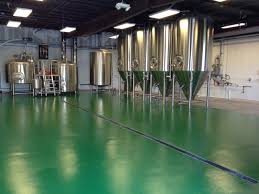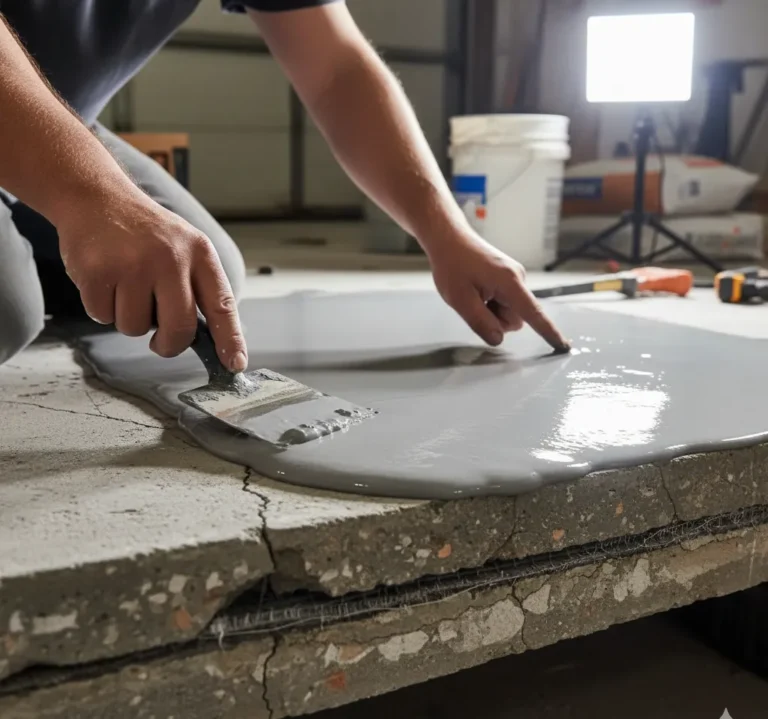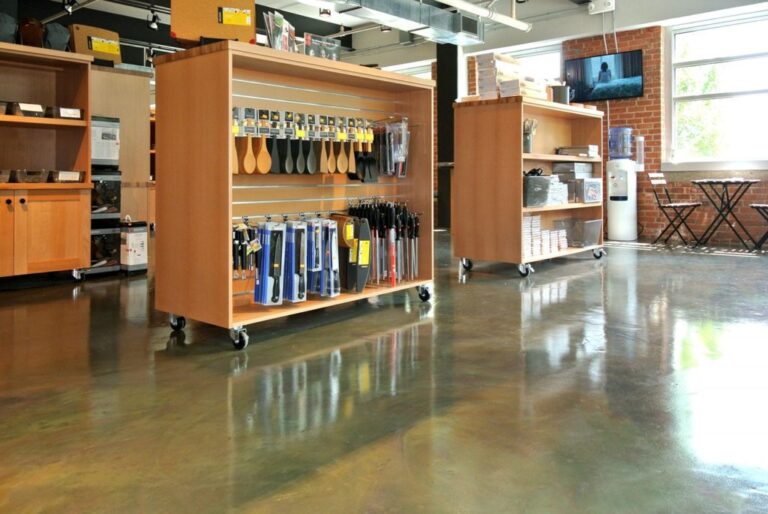The Ultimate Guide to Microcement Sealer
What is Microcement Sealer?
Microcement sealer is a protective coating applied to microcement surfaces to enhance their durability and appearance. It serves as a barrier against moisture, stains, and wear, ensuring the longevity of the microcement. By sealing the surface, it prevents the penetration of liquids and other substances that could cause damage or discoloration.
Types of Microcement Sealers
There are various types of microcement sealers, each designed for specific applications and desired finishes. The most common types include water-based and solvent-based sealers, as well as polyurethane and acrylic sealers. Each type offers unique benefits and is chosen based on the specific needs of the project.
- Water-based sealers : Eco-friendly and low in VOCs, suitable for indoor use.
- Solvent-based sealers : Provide a more durable finish, ideal for high-traffic areas.
- Polyurethane sealers : Known for their excellent abrasion resistance.
- Acrylic sealers : Offer a glossy finish and are easy to apply.
Benefits of Using Microcement Sealer
Enhanced Durability and Longevity
Applying a microcement sealer significantly enhances the durability of the surface. It protects against physical wear and tear, ensuring that the microcement maintains its integrity over time. This added layer of protection can extend the lifespan of the surface by up to 50%, according to a study by the National Institute of Standards and Technology (NIST).
Improved Water Resistance
Microcement sealers provide excellent water resistance, preventing moisture from penetrating the surface. This is particularly important in areas prone to spills or high humidity, such as kitchens and bathrooms. By keeping water out, the sealer helps prevent mold and mildew growth.
Stain Protection
One of the key benefits of using a microcement sealer is its ability to protect against stains. The sealer creates a barrier that prevents substances like oil, wine, and coffee from seeping into the microcement, making it easier to clean and maintain.
- Prevents physical damage : Protects against scratches and abrasions.
- Moisture barrier : Keeps water and humidity at bay.
- Stain resistance : Guards against common household stains.
Choosing the Right Microcement Sealer
Water-based vs. Solvent-based Sealers
When selecting a microcement sealer, it’s important to consider whether a water-based or solvent-based option is more suitable. Water-based sealers are environmentally friendly and emit fewer volatile organic compounds (VOCs), making them ideal for indoor use. Solvent-based sealers, on the other hand, offer a more robust finish and are better suited for outdoor or high-traffic areas.
Polyurethane vs. Acrylic Sealers
Polyurethane sealers are known for their superior abrasion resistance, making them ideal for floors and surfaces that experience heavy use. Acrylic sealers, however, are easier to apply and provide a glossy finish, making them a popular choice for decorative applications.
Factors to Consider When Selecting a Sealer
Several factors should be considered when choosing a microcement sealer, including the intended use of the surface, the desired finish, and environmental considerations. It’s also important to consider the ease of application and the level of maintenance required.
- Intended use : Consider the location and function of the surface.
- Desired finish : Choose between matte, satin, or glossy finishes.
- Environmental impact : Opt for low-VOC options when possible.
Application Techniques for Microcement Sealer
Surface Preparation
Proper surface preparation is crucial for the successful application of a microcement sealer. The surface must be clean, dry, and free of any contaminants that could interfere with adhesion. This may involve cleaning, sanding, or repairing any imperfections.
Mixing and Application Methods
The mixing and application of microcement sealer should be done according to the manufacturer’s instructions. This typically involves mixing the sealer thoroughly and applying it evenly with a roller or brush. It’s important to apply the sealer in thin, even coats to avoid bubbles or streaks.
Drying and Curing Times
After application, the sealer needs time to dry and cure properly. This process can take anywhere from a few hours to several days, depending on the type of sealer and environmental conditions. It’s important to follow the manufacturer’s guidelines to ensure optimal results.
- Clean and dry surface : Essential for proper adhesion.
- Even application : Prevents bubbles and streaks.
- Adhere to drying times : Ensures a durable finish.
Common Mistakes to Avoid When Applying Microcement Sealer
Working in Extreme Temperatures
Applying microcement sealer in extreme temperatures can lead to poor results. High temperatures can cause the sealer to dry too quickly, while low temperatures can prevent it from curing properly. It’s best to apply the sealer in moderate conditions.
Incorrect Mixing Ratios
Using incorrect mixing ratios can compromise the effectiveness of the sealer. It’s important to follow the manufacturer’s instructions carefully to ensure the right balance of components.
Applying Too Thick or Thin Layers
Applying the sealer in layers that are too thick or too thin can lead to issues such as bubbling, peeling, or inadequate protection. It’s crucial to apply the sealer in even, consistent layers.
- Avoid temperature extremes : Apply in moderate conditions.
- Follow mixing instructions : Ensure proper component balance.
- Consistent application : Prevents common issues.
Maintenance and Care for Sealed Microcement Surfaces
Cleaning Recommendations
To maintain the appearance and integrity of sealed microcement surfaces, regular cleaning is essential. Use a mild detergent and a soft cloth or mop to clean the surface, avoiding harsh chemicals or abrasive materials that could damage the sealer.
Reapplication Frequency
Over time, the sealer may wear down and require reapplication to maintain its protective properties. The frequency of reapplication depends on the level of use and exposure to elements, but it is generally recommended every 2-3 years.
- Use mild detergents : Avoid harsh chemicals.
- Soft cleaning tools : Prevents surface damage.
- Regular reapplication : Maintains protection.
Environmental Considerations of Microcement Sealer
VOC Content and Regulations
Volatile organic compounds (VOCs) are a concern when it comes to sealers, as they can contribute to air pollution and health issues. Many modern sealers are formulated to be low in VOCs, making them safer for indoor use and compliant with environmental regulations.
Eco-friendly Options
Eco-friendly microcement sealers are available for those looking to minimize their environmental impact. These sealers are typically water-based and contain fewer harmful chemicals, making them a sustainable choice for environmentally conscious projects.
- Low-VOC sealers : Safer for indoor use.
- Eco-friendly formulations : Reduce environmental impact.
- Compliance with regulations : Ensures safety and legality.
Comparing Microcement Sealer to Other Concrete Sealers
Advantages Over Traditional Sealers
Microcement sealers offer several advantages over traditional concrete sealers. They provide a more seamless finish, are available in a wider range of finishes, and are often more environmentally friendly. Additionally, microcement sealers are specifically designed to work with the unique properties of microcement.
Cost-effectiveness
While microcement sealers may have a higher upfront cost compared to traditional sealers, their durability and longevity can make them more cost-effective in the long run. The reduced need for frequent reapplications and repairs can result in significant savings over time.
- Seamless finish : Enhances aesthetic appeal.
- Wide range of finishes : Customizable to project needs.
- Long-term savings : Reduced maintenance costs.
Microcement Sealer for Different Applications
Residential Use
In residential settings, microcement sealers are commonly used in kitchens, bathrooms, and living areas. They provide a durable and attractive finish that complements modern design aesthetics. The ease of maintenance makes them a popular choice for busy households.
Commercial and Industrial Applications
Microcement sealers are also suitable for commercial and industrial applications, where durability and resistance to wear are critical. They are often used in retail spaces, restaurants, and warehouses, where they can withstand heavy foot traffic and exposure to various elements.
- Kitchens and bathrooms : Ideal for moisture-prone areas.
- Living areas : Enhances modern design.
- Retail and industrial spaces : Withstands heavy use.
Troubleshooting Common Issues with Microcement Sealer
Bubbling or Peeling
Bubbling or peeling of the sealer can occur if it is applied in unfavorable conditions or if the surface was not properly prepared. To address this issue, it’s important to remove the affected area and reapply the sealer according to the manufacturer’s instructions.
Discoloration or Yellowing
Discoloration or yellowing of the sealer can result from exposure to UV light or the use of incompatible cleaning products. To prevent this, choose a UV-resistant sealer and use only recommended cleaning agents.
- Proper application : Prevents bubbling and peeling.
- UV-resistant sealers : Avoids discoloration.
- Compatible cleaning products : Maintains appearance.
Latest Innovations in Microcement Sealer Technology
Self-healing Properties
Recent advancements in microcement sealer technology include the development of self-healing properties. These sealers can repair minor scratches and abrasions on their own, extending the lifespan of the surface and reducing maintenance needs.
Nanotechnology Advancements
Nanotechnology is being used to enhance the performance of microcement sealers. This technology allows for the creation of ultra-thin, highly durable coatings that provide superior protection against wear and environmental factors. Microcement flooring supplies are special materials used to create smooth and durable floors These supplies include cement mixtures colorants and tools for applying thin layers of cement Outdoor microcement finishes are special coatings that make outdoor surfaces look smooth and stylish They protect patios decks and walkways from weather damage while giving them a modern appearance
Microcement flooring aesthetics Durable museum surfaces are special materials used in museums that can withstand lots of touching and cleaning without getting damaged These surfaces help protect exhibits and make sure they stay in good condition for a long time Microcement showcases boutiques offer a sleek and modern look for store displays These stylish showrooms use smooth concrete-like finishes to highlight products
Contemporary museum coatings are special protective layers applied to artwork and artifacts in museums These coatings help preserve and protect valuable items from damage caused by light humidity and other environmental factors Sleek microcement surfaces are smooth and modern-looking floors or walls They are made by applying thin layers of a special cement mixture to create a seamless and stylish finish
Contemporary microcement kitchen offers a sleek and modern look with smooth surfaces that are easy to clean and maintain
- Self-repairing sealers : Reduce maintenance needs.
- Nanotechnology : Enhances durability and protection.
- Innovative solutions : Improve performance and longevity.
Safety Precautions When Working with Microcement Sealer
Protective Equipment
When applying microcement sealer, it’s important to wear appropriate protective equipment, such as gloves, goggles, and masks, to prevent exposure to harmful chemicals. This ensures the safety of the applicator and reduces the risk of health issues.
Proper Ventilation
Ensuring proper ventilation during the application of microcement sealer is crucial to prevent the buildup of fumes. This can be achieved by working in a well-ventilated area or using fans to circulate air.
- Wear protective gear : Ensures safety during application.
- Ensure ventilation : Prevents fume buildup.
- Follow safety guidelines : Reduces health risks.
Frequently Asked Questions
Is microcement sealer waterproof?
Microcement sealer provides a high level of water resistance, but it is not entirely waterproof. While it effectively prevents moisture penetration and protects against spills, prolonged exposure to water can eventually wear down the sealer. Regular maintenance and reapplication are necessary to maintain its protective properties.
What is the best sealer for microcement?
The best sealer for microcement depends on the specific needs of the project. For indoor applications, a water-based polyurethane sealer is often recommended due to its low VOC content and excellent durability. For outdoor or high-traffic areas, a solvent-based polyurethane sealer may be more suitable due to its robust finish. It’s important to consider the intended use and environmental factors when selecting a sealer.
How long does microcement sealer last?
The longevity of a microcement sealer depends on several factors, including the type of sealer used, the level of traffic, and environmental conditions. On average, a well-applied sealer can last between 2 to 5 years before requiring reapplication. Regular maintenance and care can extend the lifespan of the sealer.





